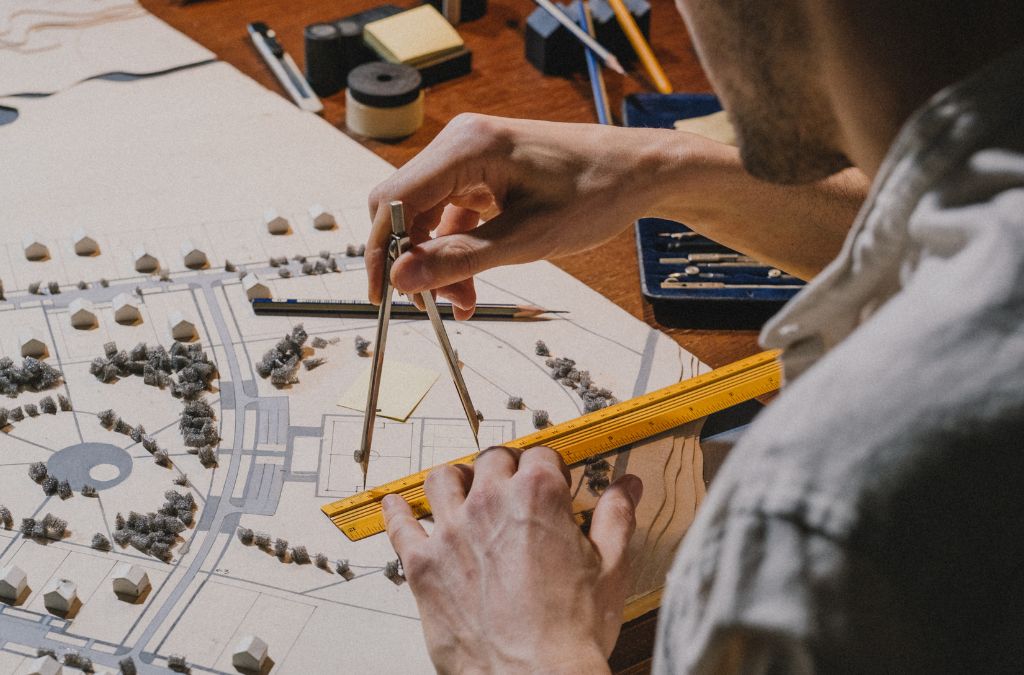Innovative Architect

-
Table of Contents
Innovative Architect: Pioneering Designs for a Sustainable Future
In an era where environmental concerns are at the forefront, architects are stepping up to create designs that not only meet aesthetic and functional needs but also prioritize sustainability. These innovative architects are redefining the built environment, integrating eco-friendly materials, energy-efficient systems, and sustainable practices into their projects. This article explores some of the leading figures in sustainable architecture and their groundbreaking contributions.
Green Building Materials
One of the key aspects of sustainable architecture is the use of green building materials. These materials are sourced responsibly, have a lower environmental impact, and often contribute to the energy efficiency of the building. Some popular green materials include:
- Bamboo: A fast-growing, renewable resource that is both strong and flexible.
- Recycled steel: Reduces the need for new steel production, which is energy-intensive.
- Rammed earth: Utilizes natural soil and has excellent thermal mass properties.
- Reclaimed wood: Gives new life to old timber, reducing deforestation.
Energy-Efficient Systems
Energy efficiency is a cornerstone of sustainable architecture. Innovative architects are incorporating advanced systems to minimize energy consumption and reduce carbon footprints. Some of these systems include:
- Solar panels: Harnessing the power of the sun to generate electricity.
- Geothermal heating and cooling: Utilizing the earth’s stable temperatures to regulate building climate.
- LED lighting: Consumes less energy and has a longer lifespan compared to traditional lighting.
- Smart thermostats: Optimizes heating and cooling based on occupancy and weather conditions.
Case Studies of Pioneering Architects
Norman Foster
Norman Foster, a British architect, is renowned for his commitment to sustainable design. His firm, Foster + Partners, has completed numerous projects that exemplify green architecture. One notable example is the Hearst Tower in New York City. This building features a diagrid structure that reduces the amount of steel required, and it incorporates rainwater harvesting systems, which reduce water consumption by 25%.
Jeanne Gang
Jeanne Gang, the founder of Studio Gang, is another leading figure in sustainable architecture. Her design for the Aqua Tower in Chicago is a testament to her innovative approach. The building’s undulating balconies not only create a striking visual effect but also help to reduce wind loads and provide shade, enhancing energy efficiency. The tower also includes a green roof and rainwater collection systems.
Ken Yeang
Ken Yeang, a Malaysian architect, is often referred to as the father of bioclimatic skyscrapers. His designs integrate natural ventilation, daylighting, and green spaces to create buildings that work in harmony with their environment. The Menara Mesiniaga in Malaysia is a prime example of his work, featuring a spiraling green ramp that provides natural cooling and reduces the need for air conditioning.
Statistics on Sustainable Architecture
To understand the impact of sustainable architecture, consider the following statistics:
- Buildings account for 39% of global carbon emissions, with operational emissions (energy used for heating, cooling, and lighting) making up 28%.
- Green buildings can reduce energy use by 30-50%, water use by 30-70%, and carbon emissions by 35% compared to conventional buildings.
- The global green building materials market is projected to reach $364.6 billion by 2022, growing at a compound annual growth rate (CAGR) of 11.2% from 2016 to 2022.
Future Trends in Sustainable Architecture
The future of sustainable architecture looks promising, with several emerging trends set to shape the industry:
- Net-zero buildings: Structures that produce as much energy as they consume, often through renewable energy sources.
- Biophilic design: Incorporating natural elements into buildings to improve occupant well-being and reduce stress.
- Adaptive reuse: Repurposing existing buildings for new uses, reducing the need for new construction and preserving historical structures.
- 3D-printed buildings: Utilizing advanced printing technology to create structures with minimal waste and reduced construction time.
Conclusion
Innovative architects are at the forefront of creating a sustainable future through their pioneering designs. By utilizing green building materials, incorporating energy-efficient systems, and embracing new trends, they are transforming the built environment. The work of architects like Norman Foster, Jeanne Gang, and Ken Yeang serves as an inspiration for future generations, demonstrating that sustainability and innovation can go hand in hand. As the demand for eco-friendly buildings continues to grow, these architects’ contributions will play a crucial role in shaping a greener, more sustainable world.